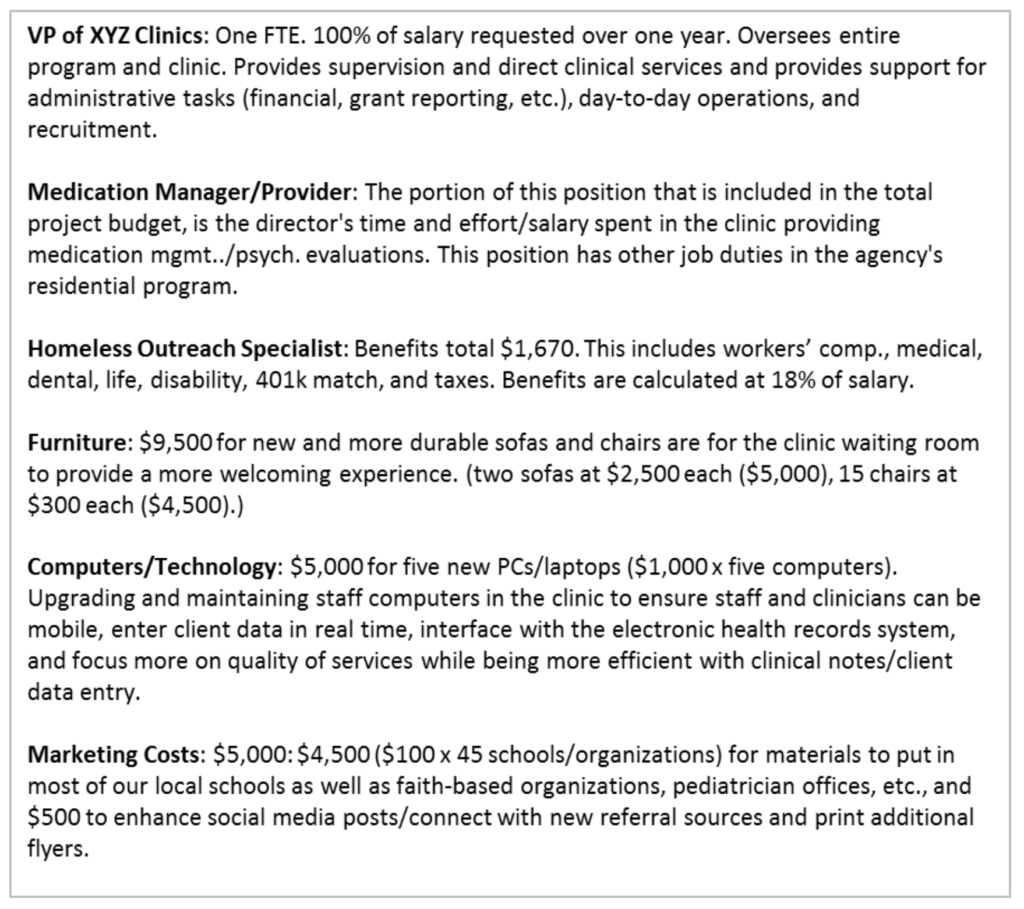
29 Jun Tying Grant Budgets to Project Activities by Hayley Waynick, GPC
With quick turnarounds and tight deadlines, grant writers can often overlook the importance of tying the numbers in the budget to the activities of the project. While funders give us many opportunities to do this, they often cite the absence of this connection as one of their biggest critiques of grant proposals. I’ve heard it mentioned time after time in funder panels, trainings, and in direct feedback from funders.
As you begin a grant proposal and rally the project team, encourage them to have a “budget first” mindset. The budget, after all, is the primary driver of what the grant is all about. When the budget is the last thing on the list to complete, this typically sets off a chain reaction of making last minute edits to the proposal narrative, budget narrative, timeline, etc. This is when the connection between the budget and the project itself can get lost. The two key places where grant writers can be sure to show this connection are the budget narrative and the proposal narrative.
Here are some suggestions along with examples of how you can develop realistic, accurate line-item and narrative budgets that show the relationship between line items and project activities.
REVENUES
In the budget narrative:
- List all revenue sources for the program. For example, don’t lump all foundations together or don’t lump all earned revenue together.
- Clearly state what amount is requested from the funder and what amount is to be funded from other sources.
- If you have specific grants secured, list them by name and possibly even what budget line they fund.
- Be clear whether revenue is secured or pending.
- Explain the revenue source. For example, don’t just say fees for service, give more detail. If you can, give the calculation for how you estimated your revenue (e.g., cost per client or cost per item/ticket sold) that makes it more evident as to how you arrived at the number.
Budget Narrative Example:
In the proposal narrative:
- Be sure you talk about your funding sources in detail in your sustainability section. If an award from the funder you are writing to will help your agency leverage other support, let them know. Discuss your past fundraising success and how you’ve sustained the project in the past.
EXPENSES
In the budget narrative:
- In each expense category, list how much the funder will support and how much is supported by other sources.
- Salaries: list staff positions and their Full-time Equivalent (FTE) for the agency as a whole and how much FTE is dedicated to the project itself. Don’t hesitate to include a sentence about their role. This helps the reader tie directly back to the project while reading the budget!
- Benefits: list the types of benefits and list how you figured benefits (salary percentage).
- Direct expenses (training, marketing, contract staff, etc.): don’t leave out the detail! Explain the cost and how you figured it. What time period does it cover? How does it tie directly to your project?
- Equipment and supplies: a good description of equipment used and the quantity/cost per unit is essential to include. Many people don’t think to include how it will be used in the context of your program. Don’t forget this key element.
- Indirect expenses: don’t just put a number or percentage! Give details on what types of expenses this will cover.
In the proposal narrative:
- Go through your budget line by line and be sure anything you are asking the funder to support is mentioned in your project description.
- Tie each line item in the budget (whether it’s computers, therapeutic supplies, furniture, workbooks, etc.) directly to the outcomes of your project.
- Be sure all staff are listed and their roles in the project are clear if there is a staffing section. If not, mention their roles in the project description.
Various examples of budget narrative for expenses:
Competency 4.8: Identify effective practices for developing realistic, accurate line-item and narrative budgets and for expressing the relationship between line-items and project activities in the budget narrative


